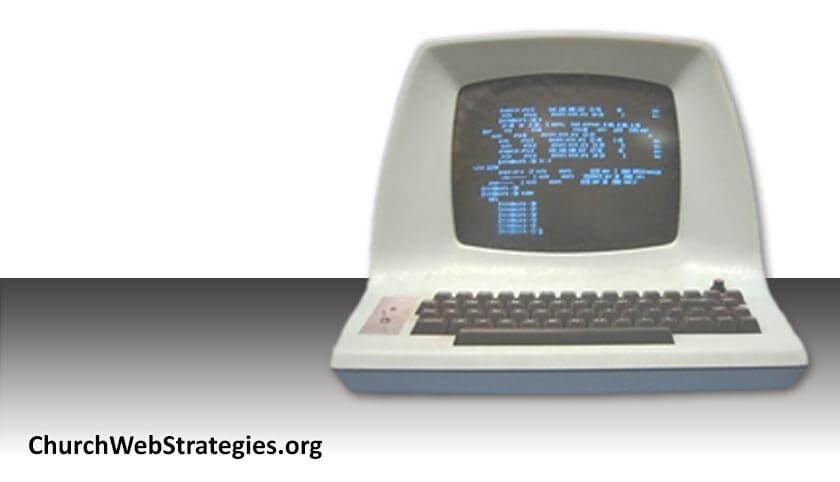Many of my readers are tech enthusiasts. You see new technologies emerge and immediately see the benefits. Your brain is spinning with ideas that will benefit the church. In a flurry of excitement, you present your ideas to your church leadership. Then you are hit with excuses of time, budget, and lack of perceived value. I imagine many of us have thrown up our hands in frustration. Why do our pastors and leaders not see the potential? It is not their fault. We as tech enthusiasts must present simple solutions with clear value to the church’s ministries.
In 1968, computer visionary Douglas Engelbart introduced the world to many technologies. He gave a presentation that was later dubbed “The Mother of all Demos“. This is because he introduced so many new technologies and concepts it turned the tech world on its ear. Computer networks, the mouse, copy & paste, hypertext, video conferencing, and screen sharing are just a few concepts he demonstrated. Remember, this was 1968! It would be decades before these concepts would be in people’s homes.
It may come as a shock that Mr. Engelbart’s lab lost funding a few years later. What lessons can we learn from history, and how can we apply them to church tech today?
Simplicity
A contemporary of Engelbart appreciated his pioneering work. He then set out to perfect and enhance those ideas. That person was Steve Jobs. So why is one name a legend in the computing world, and the other stuck in the dusty corners of computer museums? It comes down to one word, simplicity. Steve was able to boil down interfaces to make it appear easy but powerful. One example is the mouse. Engelbart’s original prototype had three buttons. Apple’s only used one. This design decision made customers more at ease in learning how to use this new device.
If you show a new feature or interface, it must appear simple to those viewing it. The problem is that making something complex is easy to do. Spend time when researching and designing your website navigation. Strive to strip away unnecessary items from your page templates. Use analytics to determine what people do not find useful, and remove them. Enhance usability by removing inconsistencies on your site. These are just a few places where you can simplify a website experience. Many more exist when considering other communication tools.
Value
The demonstration I mentioned earlier showed many amazing technologies. Yet it lacked business value. Screen sharing and remote collaboration is a valued tool for today’s businesses. But in that demonstration, you had to make those connections on your own. Instead of showing just the capabilities, show the value. This requires you to move past the facts and tug at their emotions. Saying you can automate a process is one thing. Saving time, reducing cost, increasing productivity, and reaching more people are things your pastor can easily grasp. Couple the presentation of advantages and features. The connection will be obvious, and your audience will appreciate it.
Action Item
Strive to show technology in simple terms. Provide examples of value your audience understands. Yet avoid the pitfall of limiting yourself. Sometimes more complex is better. An example is comparing tricycles and bicycles. One is clearly simpler and easier to use. But the other can overcome more obstacles. When Jobs saw Engelbart’s ideas, he overlooked the advantage of networked devices. The Apple II was to be the only thing you needed on your desk. With the advent of the Internet and wireless devices, we know now this was not a good model. Do not limit yourself as you strive to show your leadership a valuable tool. Simple is good, but it is always not the best answer.
Note: This article was inspired by the 99% Invisible Podcast, Ep. 149: “Of Mice and Men“

